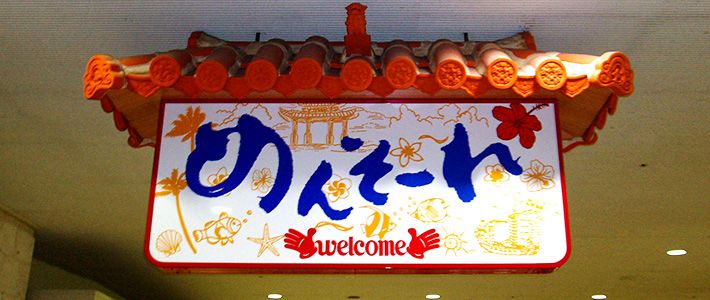
Japanese Dialects
Society Culture- English
- 日本語
- 简体字
- 繁體字
- Français
- Español
- العربية
- Русский
A Land of Many Dialects
“Thank you” is arigatō in standard Japanese, but go to Osaka and you may hear ōkini instead. Similarly dame, which can mean that something is not allowed, is akan in Japan’s second biggest city, and toriniku (chicken meat) is kashiwa.
While hyōjungo, literally “standard Japanese,” is the most commonly used form of the language, Japan also enjoys a rich variety of dialects. Local cultures have flourished and developed distinct traits over the centuries. During the long feudal period that lasted until around 150 years ago there was considerable regional autonomy even while a shōgun exerted control over the nation. The relative power of different regions helped shape the form of Japanese spoken in each area. Before Tokyo rose to dominance, the Kansai region (including Kyoto and Osaka) in western Japan was the nation’s political, economic, and cultural center, and it developed its own form of the language to match that influence.
The linguistic variation at the twilight of the feudal era in the 1860s was such that people from Tsugaru on the northwestern tip of modern Aomori Prefecture and Satsuma in what is now the southern prefecture of Kagoshima would have likely struggled to carry on even the most basic conversation.
The Spread of Standard Japanese
Kansai-ben is probably Japan’s most widely recognized dialect. Its intonation is markedly different from standard Japanese and verbs are also conjugated differently—for example, wakaranai (I don’t know) becomes wakarahen or wakerehen. However, Kansai-ben is a general classification that can be subdivided into smaller dialects like Kyō-kotoba and Kawachi-ben, spoken in Kyoto and Osaka, respectively. Tōhoku-ben, another famous regional dialect, is similarly broad, encompassing local vernaculars across northern Honshū such as the notoriously impenetrable Tsugaru-ben.
The process of standardization began following the Meiji Restoration of 1868, when the new government sought to build a strong and centralized nation state. The dialect spoken in the Yamanote district of Tokyo was chosen as a model. It made inroads initially as a written language, boosted by the establishment of a nationalized school system. The later arrival of radio and television helped carry the spoken language to every part of the country. Public broadcaster NHK played a major role in this expansion of standard Japanese.
In all parts of the nation now, young people often speak standard Japanese. The increased reach of television and the Internet have fueled the spread of the mainstream form of the language, sapping the strength of local dialects, so that children may speak entirely differently from their parents and grandparents. It certainly makes life easier to be understood wherever one goes, but for many people a local way of speaking carries a feeling of warmth and friendliness that standard language lacks.
At times, television can put the spotlight on dialects, as with the large number of comedians who speak Kansai-ben. Morning drama shows introduced the nation to jejeje, an expression of surprise in Iwate Prefecture, and kopitto, which means “thoroughly” or “properly” in Yamanashi Prefecture. American-born celebrity Daniel Kahl is also known for his fluency in the dialect of Yamagata Prefecture.
Online, there are sites like Monjirō that automatically translate standard Japanese into local dialects, including Osaka-ben and Tsugaru-ben. It is also possible to change language settings on Facebook to use it in Kansai-ben as well as standard Japanese. “Like,” which is ii ne in standard Japanese, becomes ee yan in this mode.
Same Word, Different Meaning
Regional dialects can make life difficult for Japanese learners, especially when words have different meanings. Erai is “great” or “admirable” in standard Japanese, but might mean “tired” in western Japan. While the word dandan is usually “gradually,” people use it in Shimane Prefecture to say “thank you.”
City dwellers often switch from standard Japanese to dialect when they head back to their hometowns or talk to old friends from the area. To the outside observer they may seem like different people. While this ability to shift smoothly is an advanced target for students of the language, knowing a few words of local dialect can convey a friendlier attitude.
Guide to Japanese Dialects (Japanese Only) (Banner photo: A sign at Naha Airport, Okinawa, welcomes visitors with the Okinawa dialect word mensōre. Photo courtesy of Nemo’s great uncle.)